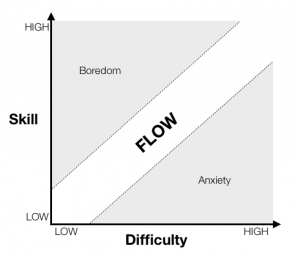Ultimately, the responsibility for doing well in class rests with the students. In order to learn, students have to do the reading, the homework, the studying. But there are things that faculty can do to increase student interest and motivate them to actually complete the work.
Below is a brief discussion of motivation in general, followed by specific frequently asked questions about students and motivation:
Some Obstacles to Motivation
Busy lives: Like many people, students often have busy lives. At the very least, they have to split their attention between several classes. They may also have a job or family obligations that are a further drain on their attention.
Lack of interest: Sometimes students just aren’t very interested in your subject. This occurs frequently in required courses.
Lack of confidence: Many students come to class with preconceived ideas of their ability in your subject area (“I don’t understand math” or “I’m just a bad writer”). If a student doesn’t believe he is capable of doing well, it can be difficult for him to see why he should try.
A sense that they don’t have to work or come to class to do well: If a student isn’t doing the work but still getting a good grade, there is little reason for her to change her behavior.
Kinds of Motivation
Instructors can use a combination of extrinsic and intrinsic motivators to help students succeed. For example, a student may do an assignment initially because it’s part of his overall grade, but he may then discover that he enjoys the subject and will go a little deeper than he otherwise might have.
Helping Students Develop Intrinsic Motivation
Since intrinsic motivation means doing something for its own sake or because we enjoy it, it stands to reason that the way to increase a student’s intrinsic motivation in your class is to help her develop a love of the subject or activities of the class.
 According to some psychologists, the state in which we are most motivated to continue doing the task at hand is called “flow.” Instructors can help students reach this state by giving appropriately challenging assignments.
According to some psychologists, the state in which we are most motivated to continue doing the task at hand is called “flow.” Instructors can help students reach this state by giving appropriately challenging assignments.
Appropriately challenging assignments balance student skill level with the difficulty of a task. An assignment that is too difficult can lead to frustration and anxiety for a student with a low skill level. An assignment that is too easy can lead to boredom for a student with a high skill level. Neither anxiety nor boredom is very motivating.
To find out the right difficulty level for your students, consider a pre-test to determine their skill level. (There are many other factors relevant to Designing Appropriate Assignments.)
Frequently Asked Questions about Student Motivation
How do I get students to come to class?
- Give some credit for attendance or participation. If you are willing to assign credit for coming to class, students will understand that it is important in your class.
- Use some information taught only in class on exams (but tell students you are doing this).
- Keep class lively by using active learning. If students aren’t actually doing anything in class, or if they can find all the necessary information in a book, then the reason for coming to class may be unclear to them.
- Get to know students by name. Show up early to chat with them. Use a photo roster to connect names with faces.
How do I get students to participate in class?
- Clarify for students what you mean by “participation.” Different instructors have different expectations. Students are much more likely to perform up to your expectations if they know what they are.
- Reward participation with specific praise. The specificity of the praise will indicate to students what they are doing well and encourage them to continue. (“That was a very interesting connection you made between these two texts.” “Excellent question! Why do you think the procedure was written this way?” “Good thinking today, everyone!”)
How do I get students to do the homework (including reading)?
- Make sure the homework or readings are connected to class time in some way. If there doesn’t seem to be any reason to complete the reading or homework, students often won’t bother.
- Have students write a short response to be discussed in class and then collected.
- Start class asking student to solve a difficult problem they were assigned as homework.
- Use earlier homework assignments as basis for a larger project.
- Assign an appropriate amount of homework or reading. Too much can be overwhelming, Too little can seem purposeless.
- Explain your rationale for assigning homework and reading.
Resources
Csikszentmihalyi, Mihaly (1990). Flow: The Psychology of Optimal Experience. New York: Harper and Row.
Svinicki, Marilla D. (2004). Learning and Motivation in the Post-Secondary Classroom. Bolton, MA: Anker.